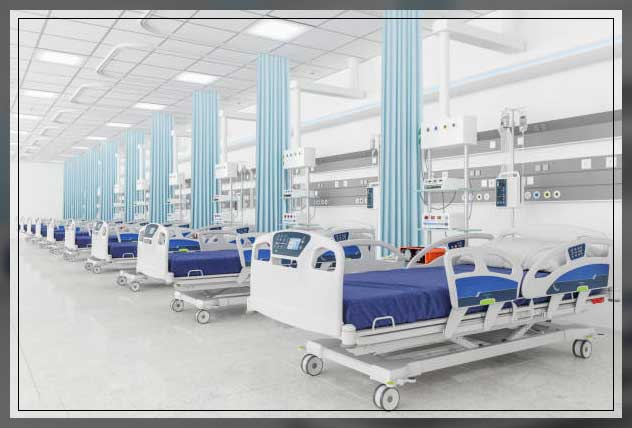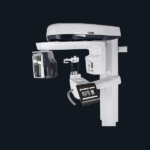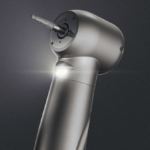Hospitals and medical establishments usually consist of several types of hospital beds.
These differ according to their function and use in the medical facility.
Some of these are also fit for use for bed-ridden patients at home.
This article discusses what are the different types of hospital beds and in what capacity will they be used. Keep reading below to know more!

Types of Hospital Beds Mechanisms
Manual Beds in General Wards
Beds in the general wards are the elementary type.
These are simple beds that include a frame, a metal sheet and a mattress.
They are only for simple use in resting in basic hospital wards.
However, there are other manual beds that come with the additional features of adjustments with a hand crank.
Hence, you can raise the head or foot or increase the height of the bed using these manual adjustments.
It is the least expensive out of all other options and is good for use where you do not need frequent adjustments.
Though, it does not offer several position changes and can be straining for the caregiver.
Semi-Electric
Not every patient has the ability to use the manual bed by themselves.
In that case, semi-electric beds are a good option between manual and electric.
The back and leg adjustment in this bed is electric and also the part of the entire bed where you sleep on.
What it does not have is the function of height adjustment.
Patients who do not have any issues with balance can benefit from it.
The caregiver can handle the height with a manual crank.
It is comparatively cheaper than fully electric beds plus, you can easily make head and foot adjustments, though the height adjustments are dependent on the caregiver.
Electric
The electric beds offer convenience, support and comfort making them a viable option for household use.
The height, foot and head positions are changed only with a button.
Therefore it reduces reliance and dependency on the caregiver.
Plus, it comes with a wired remote control that makes it even easier to use.
Besides that, they have guard rails, detachable head and foot boards.
They are for:
- Chronic pain
- Arthritis
- Low mobility
- Respiratory conditions
- Heartburn

Fowler and Semi-Fowler
The fowler beds are based on the fowler position whereby the head is in a raised position for better drainage after an abdominal operation.
This is an ergonomically designed bed with four sections of the perforated bed.
The fowler position is a standard position when a patient is in a semi-sitting position.
Knees in the position may be straight or bent.
There is a:
- High fowler
- Semi-fowler
- Low fowler
In a high fowler, the position is upright at a 90-degree angle.
For a semi-fowler position, the sitting is at 30 to 45 degrees whereas for a low fowler the head is slightly raised.
It is a 2-function bed where you can lift the knee rest and the backrest of the bed.
Though the mechanism for this function can be hydraulic, electric or mechanical.
It also contains collapsible side rails, motors and cranks for lifting, has a central braking system plus head and foot rest made of ABS steel.
These beds are useful for people facing immobility and respiratory issues, for those who need nasal feeding tubes and for postpartum women that are in need of uterine drainage.
The other beds in this category are the semi-fowler beds.
As the name suggests, it enables the semi-fowler position.
Here it lifts the torso and head from the back rest section from 15 to 45 degrees whereas the patient lies on the bed.
Since the angle of elevation is rather smaller, it may include bending the knee as well as raising the foot.
The mechanism again can include lifting through a manual crank, electric actuator system and a hydraulic gas spring.
It suits people that need lung expansion, for women in labor or patients with a respiratory and cardiac condition.
These too use ABS or stainless steel in head and foot panels.
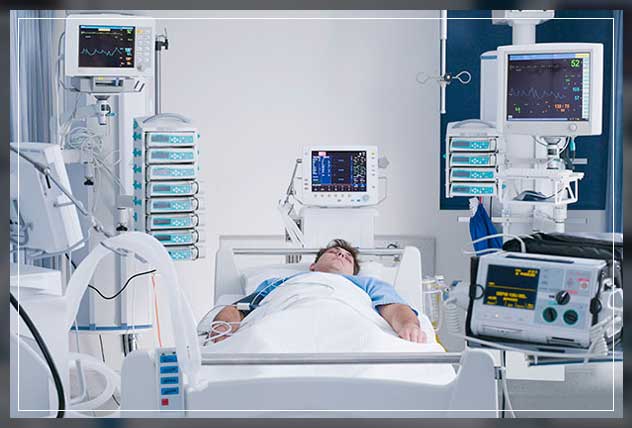
Specialty Hospital Beds
These beds meet very specific needs of the patients.
They address bariatric patient weight, the possibility of fall risks and also non-clinical design.
The specialty beds have upscale features such as:
- Advanced positiong options
- Whisper- quite operations
- Plastic railings
- Staff-ebedded controls
You can use these beds at home but they have all the features of what you will find in the hospitals.
Hence, you avail the latest technology and comfort in your home setting.
As they cater to specific needs, these beds are more expensive than electric beds found in hospitals.
Bariatric Hospital Bed
These beds can accomodate patients that weight up to 1000 pounds while usual ones only have the capacity of 350 to 400 pounds.
It has a larher size and width of 54 inches alongside height adjustability.
The electric adjustability enables the patient to reposition themselves independetly.
It is durable but also difficult to move around.
Adjustable and Sleep to Stand Beds
Adjustable beds look like usual home beds but have the functions of a hospital bed with high adjustability.
They provide the support and comofrt for things that you will do at home such as relaxing, watching TV, reading a book and sleeping. Thus, its other name is sit to stand bed.
They can go from lying down to standing up.
Its adjustability can prevent falls during transfers.
Low Beds
These are designed for people who have a fall risk.
As the name suggests, the ends are low so there is a lesser risk of falling as the distance between the floor and bed mattress is reduced.
The position and height is adjustable.
Thus, this design helps to reduce the strain on the caregiver while placing and picking up the patient from bed.
Know about other bed types below.

Other Types
- Motorized Bed: This is for patients with limited mobility. These beds can be in ICU for patients with paralysis supporting them with motorized adjustments for knees, back and height.
- 3 Function Bed: It essentially has the functions of a Fowler bed with height lowering and rasing additional function. These are usually in emergency rooms and ICU especially for elder patients that face difficulty while getting in and out of bed.
- 5 Function Bed: As the name suggests, the features in this one surpass that of the 3 function bed. Additionally it has forward and reverse tilt functions. Hence, the bed can tilt backwards and forwards. These are present in ICU for patients with limited mobility or paralysis.
- Collapsible beds: These are for patients that are bedridden and are seeking treatment and healing from fractures. They suit patients with different sleeping needs.
- Fully Enclosed Safety Bed: These are not excatly hospotal beds but can prevent from falls, give caregiver an easier access, prevent from entanglement and unassisted exits. The padding can protect people with seizures and enclosed space is ideal for anyone suffering from sensory processing disorders.
- Low air loss bed: This has air blow system and special cushions to keep patients cool and dry. It is oresent in burn units of hospitals and for patients of skin graft.
- Deluxe Bed: It provides the ease of adjustability and maneuvering alongwith electric height adjustment. It has safety features that reduce thr risk of patient entrapment and unsafe exit.
- Residential Design: These beds are not exactly a hopsital bed but with similar features for comfort. It has electrical adjustability to control the height and prevent bed sores, relieve pressure points while also giving enough support and comfort.
- Recliner Bed: For patients with acute back pain with adjustable positions for a comfortable sleep.

Considerations in Purchasing Hospital Beds
Whether you intend to use the bed at home or in the hospital facility, it is important to know the kind of bed that will suit the patients.
For that, consider the following:
Size of Patient
If the patient is overwight then a bartriatic bed will suit their needs better.
It is wider than a standard bed hence, it will be comfortable for the patient.
Similarly, also consider the patients’ height while getting a bed.
Long-term or Short-term use
If the patient is only going to be temporarily bed-ridden, then it is feasibel for the caregiver to lift them up and change their position.
However, if it is for the long-term then then full electric or semi-electric beds are a better option.
It will require less care-giver effort and increase independency. Hence, if the patient lies in the bed for longer than 15 hours, consider an option that makes them less dependable.
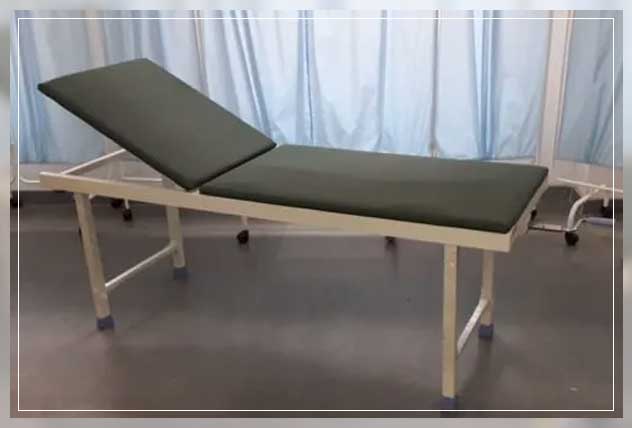
Positioning
Choose a bed that allows patients to re-position themsleves.
The positioning features impact comfort and quality especially for patients that have limited mobility.
This brings us to…
Current Mobility of the Patient
You will choose a bed based on how many positioning features it has, in case of how much the patient struggles with repositioning themslves.
An adjustable bed with electric and semi-electric machination is best for patients that are usnteady on their feet risking a fall.
Though, if a paetient can get out and in a bed without needing any assistance and can also slighlt reposition themselves then you may not need an adjustable bed.
Caregiver Strength
While the comfort of the patient is important, the strength and stamina of teh caregiver matters too.
Assess if the patient requires several position changes. If so, they will need an electric bed.
Finally,
Here you have a list of all of the types of hospital beds.
Choose what suits the patients’ needs and reduces dependency on the caregiver.
For other medical equipment, have a look at our shop.

